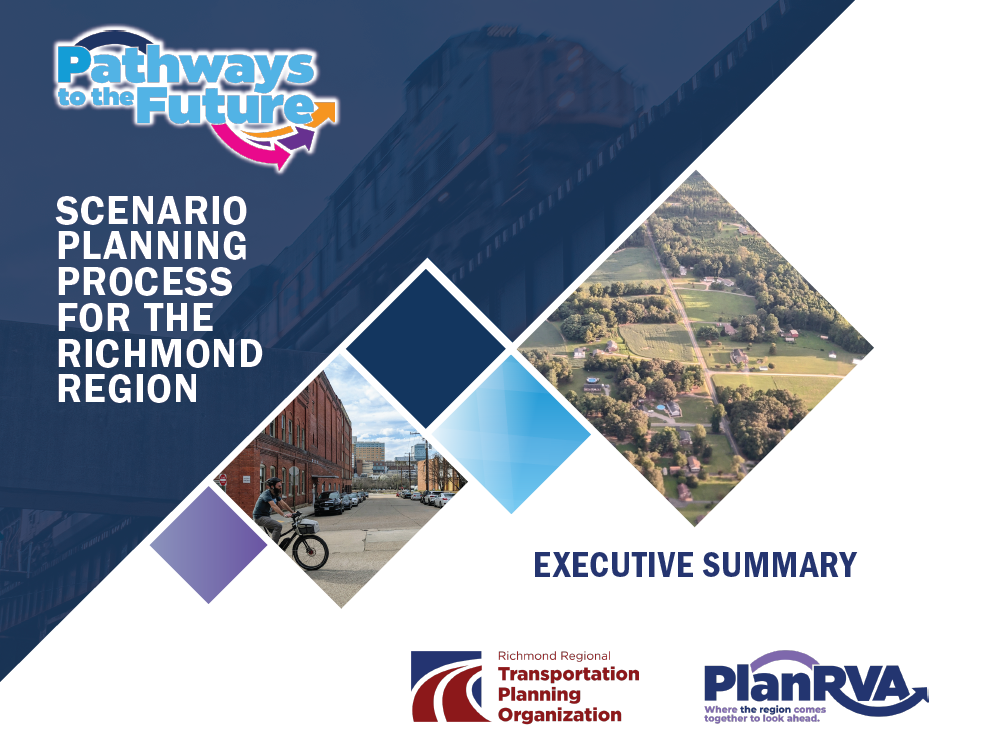Core Products
Pathways to the Future
Long Range Planning, by design, looks out far enough to capture substantive regional change in land use, economics, and other regional dynamics. This allows regional leaders to anticipate threshold-level changes that must be planned for as well as to consider how to avoid undesirable outcomes with enough time to manage the ripple effects of near-term decisions.
Long Range Planning benefits from examining a range of plausible futures through scenario planning. The futures vary based on key regional drivers of change including community factors (land use, housing), economics, and other factors such as climate resiliency and technology.
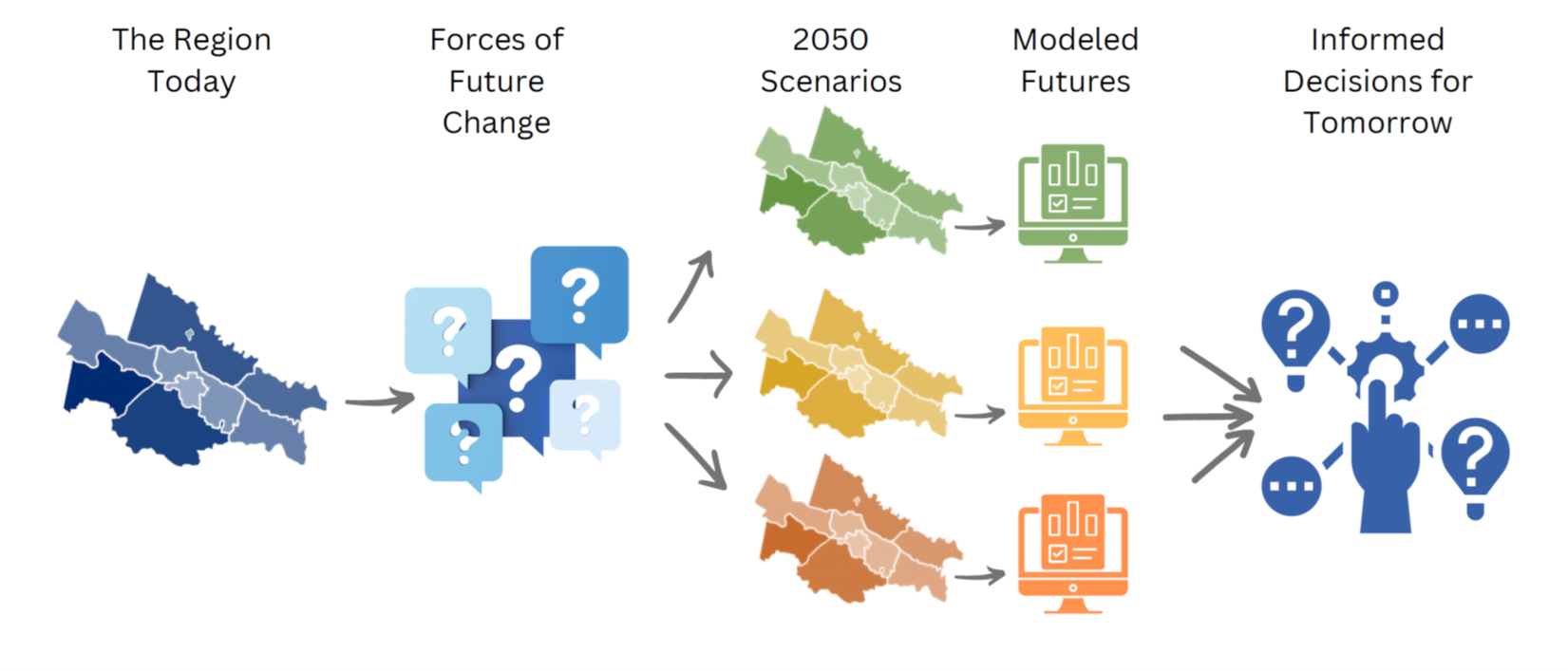
Scenario Planning Documents
Related Documents
Scenario Planning
What if Trends are Uncertain?
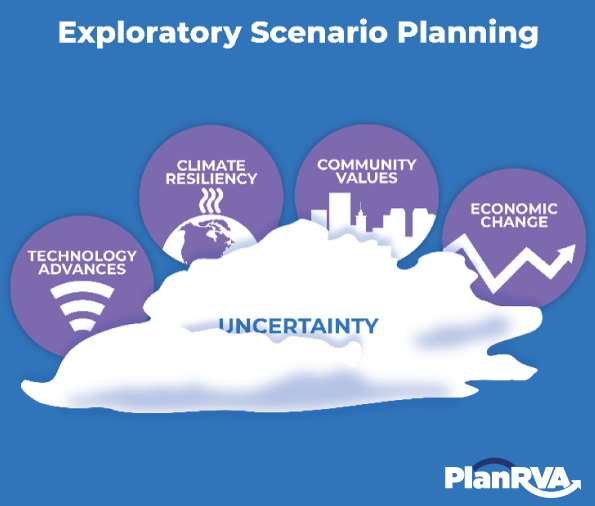
When trends become unpredictable or ‘disruptors’ threaten to alter future trends, long range planning benefits from considering alternative futures through Exploratory Scenario Planning.
Exploratory Scenario Planning
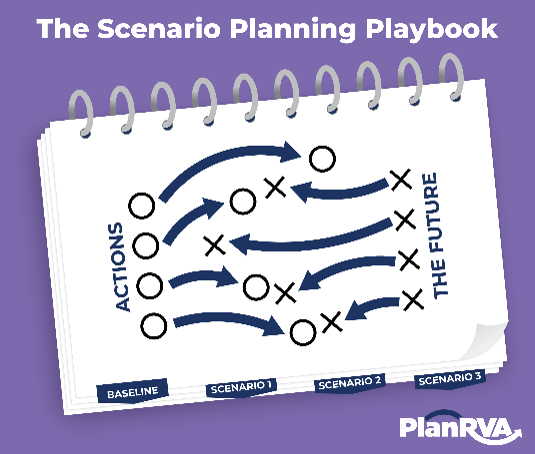
The primary purpose of exploratory scenario planning is to be prepared.
The future is uncertain – like an opponent’s offense, we can think ahead to what may happen, and envision our actions in each scenario. Those insights will inform policy directions and investment strategies. We can also identify positive outcomes that we can aim for by design.
Focusing on What Could Happen
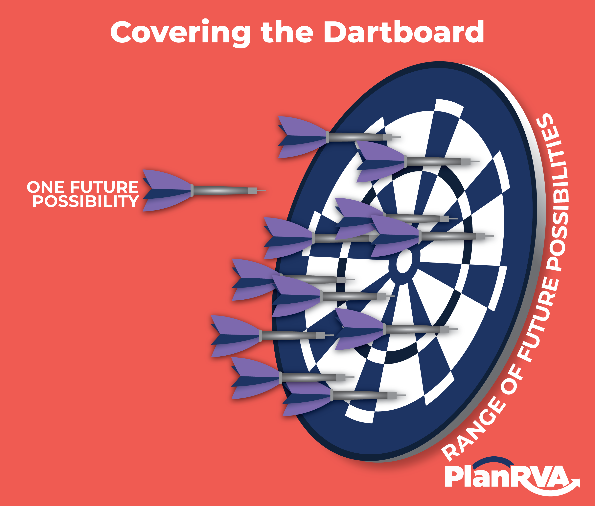
Exploratory Scenario Planning looks at a range of possible futures to understand what could happen rather than focusing on one future vision.
Forces of Change
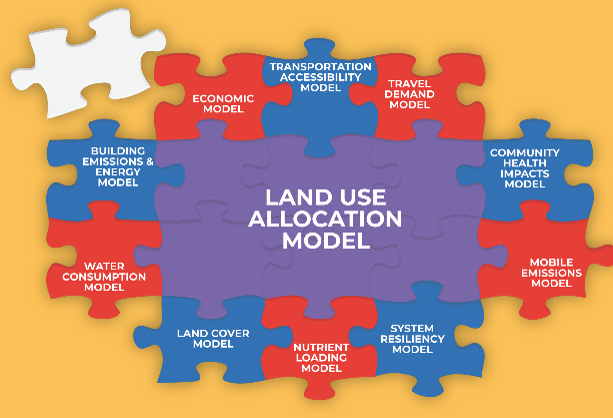
Why Scenario Planning?
Scenario planning helps to guide policy makers, planners, and community members through consideration of various future conditions and how to effectively respond to and plan for them. Pathways to the Future’s scenarios are a set of reasonably possible, but structurally different futures.
The outcome of this scenario planning process will communicate the risk and opportunities of each scenario to different program areas of PlanRVA which includes housing, environment, community development, emergency management and transportation. In general, depending on the program area, the scenario planning process can result in three levels of applicability - education and awareness, strategic direction (vision setting or exploration), and action identification (in the form of policy recommendations and project identification & selection).
Scenario Drivers
Scenario planning is not just a set of “what if” questions. Rather, the “what ifs” are supported with data analysis. When we try to predict what might happen in the future based on changes to individual elements, it is called “modeling.” For Pathways to the Future, these individual elements are called “drivers.” Examples of the drivers used for Pathways to the Future include things like population dynamics (changes in population growth, household size, immigration, etc.) and resiliency dynamics (changes in preference and availability of renewable energy, variations in sea level rise). Changing the drivers – like predicting major increases in population growth or a shift to renewable energy – will change the output of the models via performance measures. Pathways to Planning’s five scenarios represent changes to the drivers. In modelling those changes, our performance measures show us what those futures might look like.
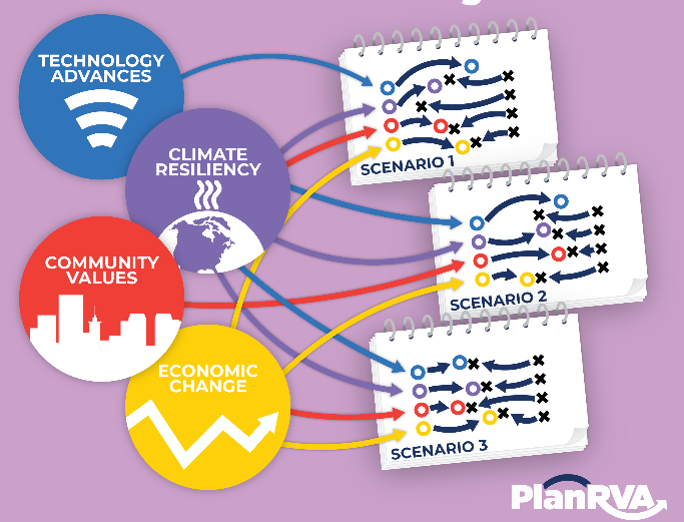
Exploring the Scenarios
Incorporating a Baseline Scenario helps establish a point of comparison for the four alternative future scenarios. The baseline scenario is a plausible projection based on current information and assumptions those are already in place or planned. It serves as a benchmark or reference point against alternative future scenarios. Comparing the alternative future scenarios could give the region insights into potential uncertainties.
The Baseline Scenario helps us see into the future that we are attempting to reach today. However, the future is uncertain and the requirements for achieving the Baseline may not pan out as expected. So what if we don’t head in this direction?
To review the in-depth scenario results, visit this story map.


